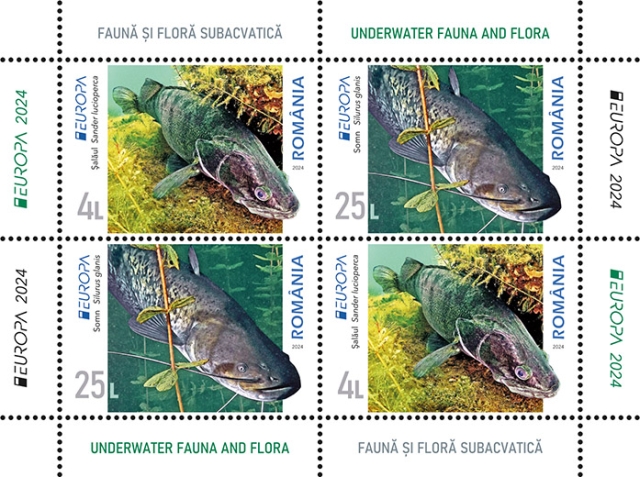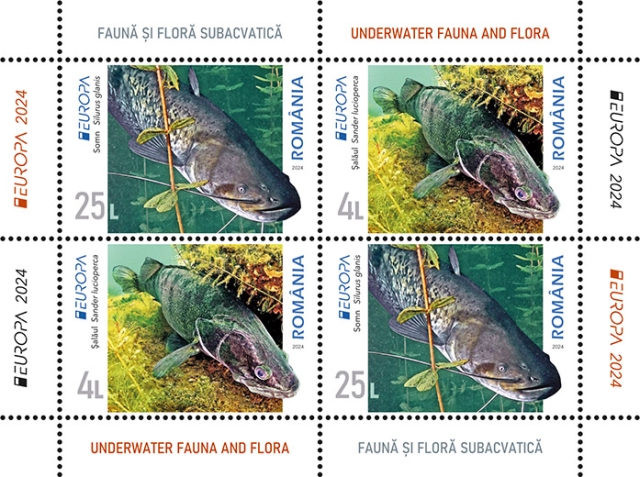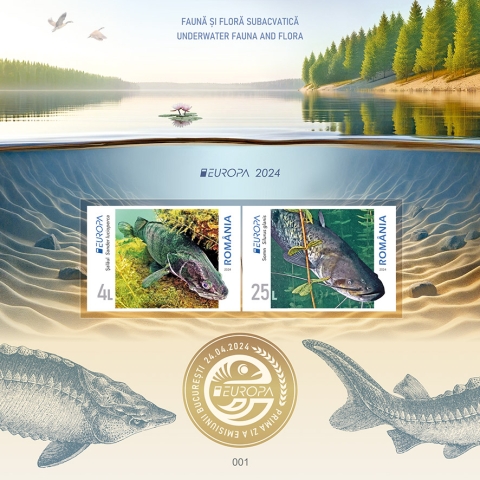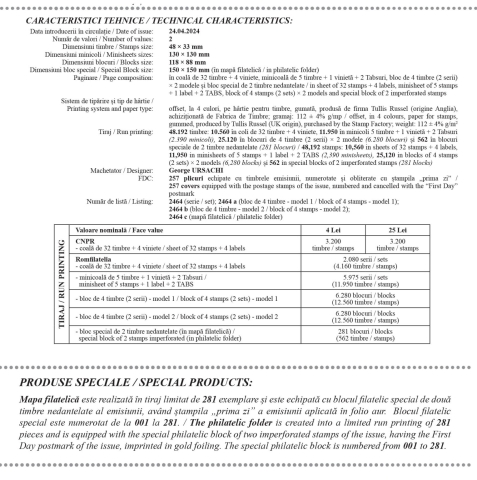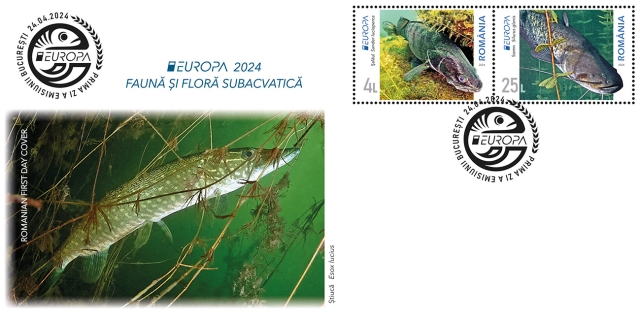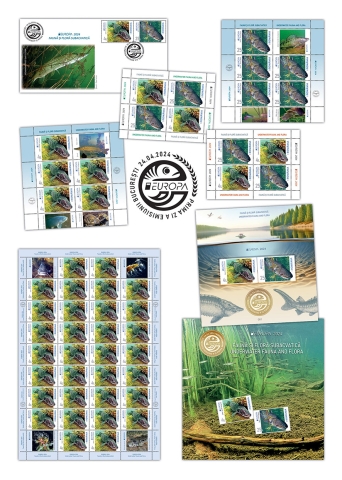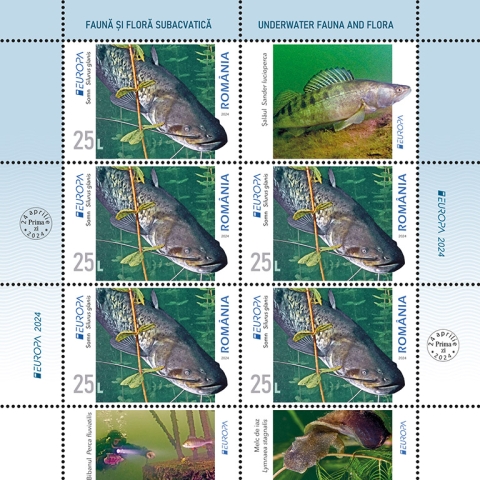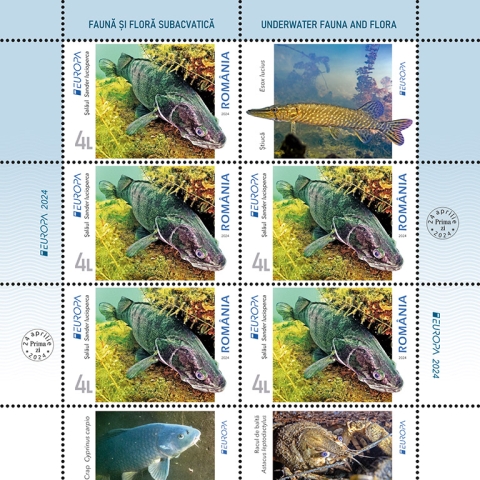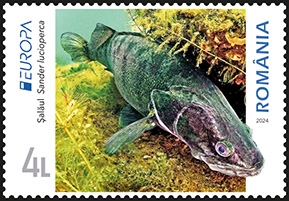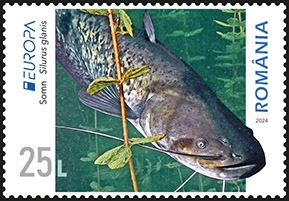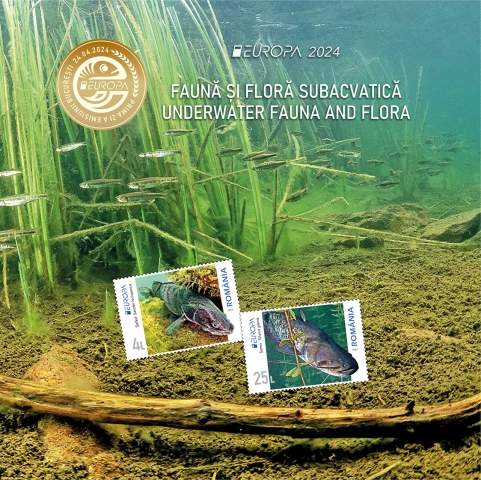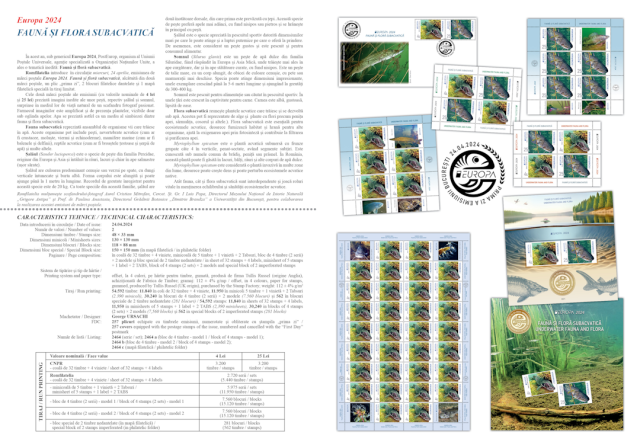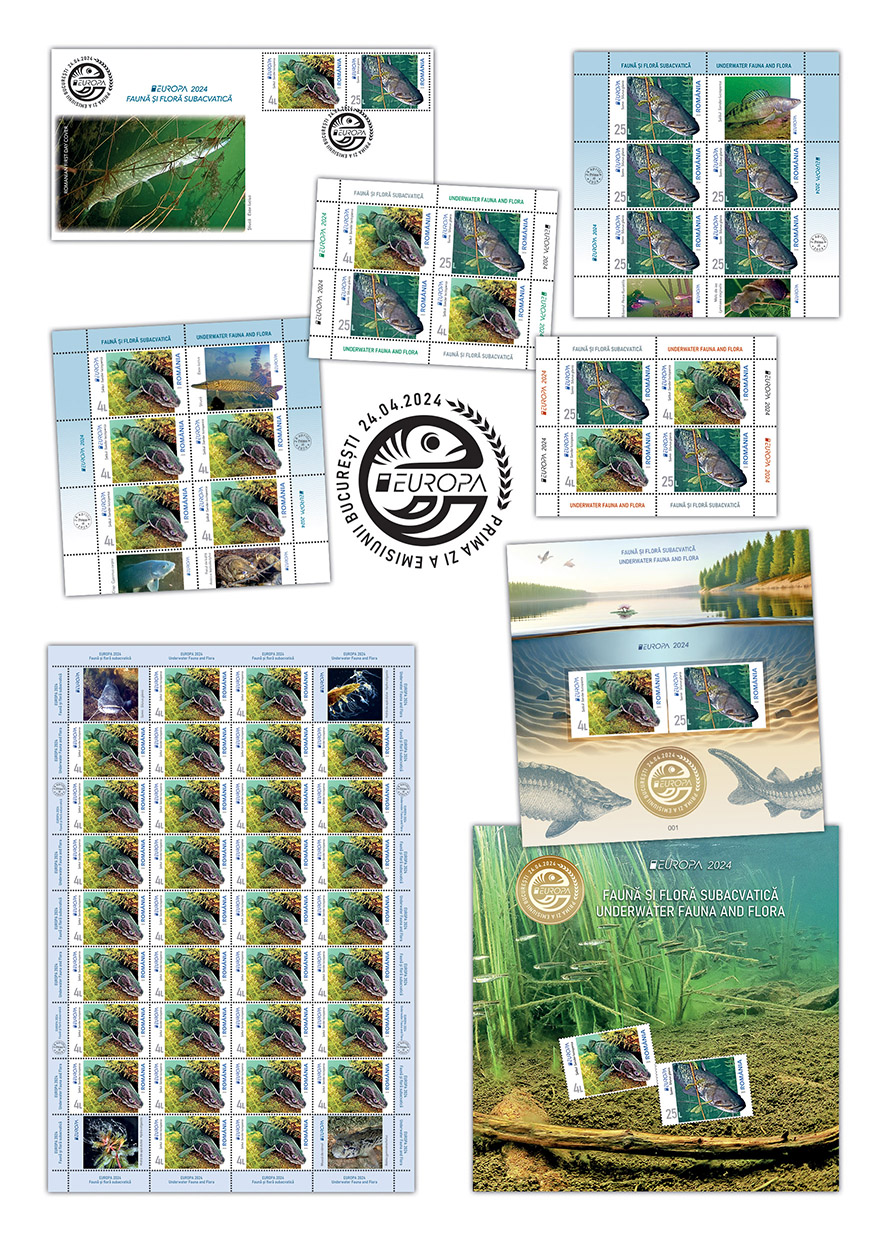
Sent Wednesday, 24th of April 2024
This year, under the title Europa 2024, PostEurop, a body of the Universal Postal Union, a specialized agency of the United Nations, has chosen a new topical issue: Underwater fauna and flora.
Romfilatelia introduces into circulation the postage stamps issue Europa 2024. Underwater fauna and flora on Wednesday, April 24, consisting of two stamps, a First Day Cover, two philatelic blocks and a special philatelic folder in a limited run printing.
The two postage stamps of the issue (with the face values of Lei 4 and Lei 25) feature unique images of some fishes, the zander and the wels catfish and the pike, captured in their natural habitat by a passionate diver photographer. The charm of the images is also amplified by the presence of plants, visible only under the water mirror. Water thus presents itself as an environment of symbiosis between underwater fauna and flora.
Underwater fauna is the set of living organisms that live in water. These organisms can include fish, aquatic invertebrates (such as crustaceans, molluscs, worms, and echinoderms), marine mammals (such as whales and dolphins), aquatic reptiles (such as turtles and water snakes), and many others.
The zander (Sander lucioperca) is a species of fish in the Percidae family, native to Europe and Asia and found in rivers, lakes and even brackish (slightly salty) waters.
The zander is predominantly greyish or greenish on the back with dark vertical stripes and a white belly. The body shape is elongated and can reach up to 1 metre in length. The record weight recorded for this species is 20 kg. This species prefers deeper, sandy or rocky bottom waters and feeds mainly on fish.
The zander is a popular species in recreational fishing because of the large size it can reach and the strong fight it puts up when caught. It is also considered a tasty fish and is also fished for food consumption.
The wels catfish (Silurus glanis) is a species of freshwater fish from the Siluridae family, being spread in Europe and Asia Minor, where it lives mainly in running waters, but also in clean stagnant waters with a sandy bottom.
The wels catfish is a large fish, with an elongated body, usually grey in colour with lighter spots or marbling. The species can reach impressive sizes, with some individuals growing up to 5-6 metres long and reaching weights of 300-400 kg.
The wels catfish is fished for food or sought after in recreational fishing. In some countries it is bred in captivity for meat. The meat is white, tasty, boneless.
Underwater flora brings together aquatic plants that live and grow under water. These can be represented by algae and flowering plants such as parrot feather, tape grass, hornwort and others. Underwater flora is essential to aquatic ecosystems because they provide habitat and food for other organisms, help oxygenate water through photosynthesis, and help filter and purify water.
Myriophyllum spicatum is a submerged aquatic plant with leaves clustered 4 each in the vertices, pinnately divided, having thin segments. It is known under the common name of Eurasian watermilfoil or spiked water-milfoil (brădiș, peniță or prâsnel). In Romania, this plant can be found in lakes, ponds, rivers and other fresh water bodies.
Myriophyllum spicatum is considered an invasive plant in many areas of the world because it can grow densely and disrupt native aquatic ecosystems.
Both underwater fauna and flora are interdependent and play vital roles in maintaining the balance and health of aquatic ecosystems.
Romfilatelia thanks the diver photographer Aurel Cristian Mitrofan, Senior Researcher Luis Ovidiu Popa, General Manager of the “Grigore Antipa” National Museum of Natural History and Prof. Paulina Anastasiu, Ph.D., Manager of “Dimitrie Brandza” Botanical Garden of the University of Bucharest, for the collaboration granted to the development of this issue of postage stamps.
The philatelic issue is available starting with Wednesday, April 24th 2024, in Romfilatelia’s shops network in Bucharest, Bacău, Brașov, Cluj-Napoca, Iași and Timișoara and online on https://romfilatelia.ro/store/.



